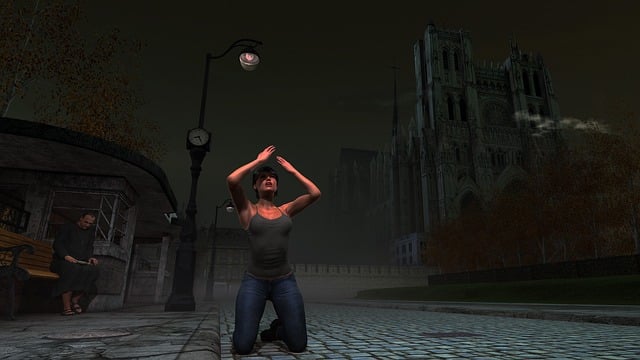Motorcycle helmets are vital life-saving devices that significantly reduce the risk of severe head injuries and fatalities in accidents, with studies showing helmeted riders are up to 40% less likely to suffer traumatic brain injuries. Properly fitted, certified helmets with regular maintenance are crucial for optimal protection, as even minor cracks can diminish their effectiveness. Their importance is underscored in personal injury prevention, including legal cases involving elder law and product liability claims.
Motorcycle accidents can happen in an instant, leaving riders vulnerable to severe head injuries. Helmets stand as a crucial shield, offering protection that could mean the difference between life and death. This article delves into the essential role of helmets in safeguarding motorcyclists’ heads, backed by statistical evidence highlighting their effectiveness in reducing severe injuries and fatalities. We’ll guide you through choosing the right helmet, ensuring optimal safety through proper fit, certification, and maintenance.
- The Role of Helmets in Protecting Motorcyclists' Heads
- Statistical Evidence: Reducing Severe Injuries and Deaths
- Choosing the Right Helmet: Fit, Certification, and Maintenance
The Role of Helmets in Protecting Motorcyclists' Heads

Motorcycle helmets play a pivotal role in safeguarding motorcyclists’ most vulnerable body part—their heads. In the event of a crash, the head is at a significantly higher risk of sustaining severe injuries due to its delicate nature and proximity to potential impact surfaces. A motorcycle helmet acts as a protective barrier, designed to absorb and distribute the force of an impact, reducing the risk of life-threatening head traumas.
The protection offered by helmets extends beyond mere physical barriers; they also include advanced safety features like air vents for comfort and specialized materials that conform to the shape of the head, ensuring a snug fit. These essential components contribute to significantly lowering the instance of traumatic brain injuries (TBIs) in motorcycle accidents without a helmet. Moreover, discussions around accident compensation and property damage claims often highlight the crucial role of helmets as a mitigating factor in such incidents, emphasizing the importance of their widespread use for personal safety on the roads.
Statistical Evidence: Reducing Severe Injuries and Deaths

Statistical evidence overwhelmingly supports the crucial role helmets play in motorcycle accident prevention. Studies consistently show that riders wearing helmets reduce the risk of severe head injuries and fatalities by a significant margin. According to research, helmeted riders are approximately 40% less likely to suffer from traumatic brain injuries (TBI) compared to their unhelmeted counterparts. Moreover, helmet use has been directly linked to a decrease in motorcycle-related deaths, with some studies estimating that helmets save over 2,000 lives each year in the United States alone.
These statistics highlight the critical importance of wearing a helmet not just for individual safety but also as a key component in personal injury prevention, particularly in cases involving elder law and product liability claims. A personal injury attorney would undoubtedly emphasize the role of helmets in reducing the severity of injuries and potential legal repercussions stemming from motorcycle accidents.
Choosing the Right Helmet: Fit, Certification, and Maintenance

When it comes to selecting a helmet for motorcycle riding, choosing the right one could be a matter of life and death. The primary goal is to ensure it fits securely and comfortably on your head. A well-fitting helmet should have no more than 25mm movement up or down, and it should sit level on your head without sliding. Always check for certification from reputable organizations such as the Department of Transportation (DOT) or European Standard (CE). This guarantees that the helmet meets minimum safety standards.
Regular maintenance is equally crucial. Inspect your helmet periodically for any signs of damage, cracks, or degradation in materials. Replace it if necessary, as a damaged helmet offers minimal protection during a motorcycle accident without helmet. Remember, the right helmet is not just about style and preference; it’s an essential component of your safety gear, designed to absorb and distribute the force of impact away from your head, thus significantly reducing the risk of severe injuries or fatalities in auto accidents involving motorcycles.
Motorcycle helmets are not just accessories; they are life-saving protective gear. The compelling statistical evidence presented here underscores their critical role in reducing severe injuries and deaths among motorcyclists. By choosing the right helmet that fits well, meets safety certifications, and is maintained properly, riders can significantly minimize risks associated with motorcycle accidents without a helmet. This simple yet effective measure can make all the difference in preventing tragic outcomes.






